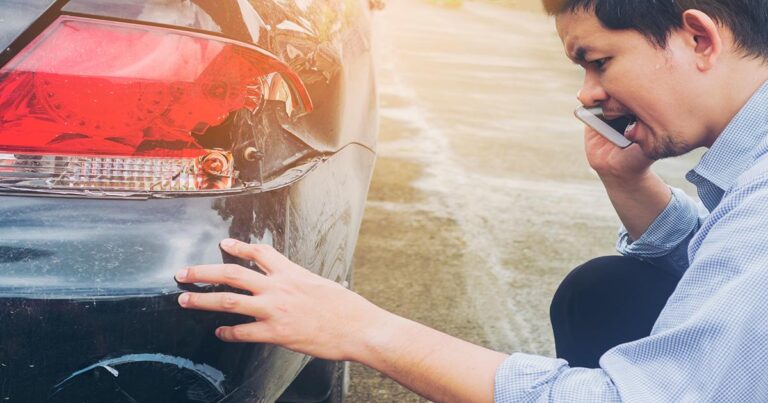Three Stages of a Collision: Understanding the Impact Process
Many understand that car accidents happen fast, but few grasp the science behind the motion and crush involved. The three stages of a collision: vehicle, occupant (human), and internal—are key to understanding crash dynamics, injury mechanisms, and safety design. In this article, we dive into each stage in detail and explore advanced considerations often overlooked in standard coverage.
Stage 1: Vehicle Collision
At this initial stage, the vehicle strikes another object—another vehicle, a barrier, or a fixed obstacle. The body and frame deform rapidly, absorbing energy through crumple zones. At around 30 mph, a typical car might compress about two feet in under a second, demonstrating how violent this initial energy release truly is.
Each accident is affected by variables such as speed, angle of impact, mass of the vehicles involved, and vehicle design. Proper crash compatibility standards are vital here, impacting both the forces transmitted to occupants and the vehicle’s crashworthiness.

Modern reconstruction often uses laser scanning and 3D photogrammetry to create precise, digital models of the collision scene—helping investigators measure deformation and vehicle alignment with millimeter accuracy.
Stage 2: Human Collision
Once the vehicle stops moving, the passengers inside continue forward due to inertia. If restrained, seat belts and airbags absorb much of that energy—reducing injury risk. Without restraints, occupants may collide with hard surfaces like the windshield, dashboard, or steering wheel, often sustaining head injuries, chest injuries, or even being thrown against each other.
Biomechanical experts now use computer modeling and crash test data to better understand occupant motion and forces. These tools help determine how injuries happen and guide safer vehicle design.
Stage 3: Internal Collision
Even when the body is restrained, internal organs continue to move independently. This internal motion can cause severe damage—bruising or tearing of organs like the liver, spleen, or brain when they collide with skeletal structures. These injuries are often hidden initially and may worsen without prompt medical intervention.
In many investigations, forensic biomechanics and medical imaging are used to map injury patterns back to the forces and movement in this internal stage—guiding both clinical care and legal analysis.
Why Understanding These Stages Matters

Here’s why this breakdown is not just academic:
- Injury Prevention: Crumple zones target energy absorption during Stage 1; restraint systems and airbags mitigate Stage 2; medical responders are trained to look for hidden internal injuries (Stage 3).
- Forensic Clarity: During reconstruction, analysts use tire marks, crush data, and vehicle orientation combined with these stages to establish sequence and cause. THIS scientific approach fuels legal, insurance, and safety decisions.
- Policy & Design: These insights inform regulations like crash test requirements or the deployment timing of advanced airbags—making cars safer across the board.
A Preventable Collision Is One in Which
A preventable collision is any traffic accident that could have been avoided if the driver involved had acted differently. This means the driver failed to take reasonable steps to prevent the incident, even if another party was partially at fault. For example, if a driver was following too closely, speeding, or not paying attention to road conditions, the collision is considered preventable. The key factor is whether the driver exercised the necessary caution and defensive driving techniques that could have averted the crash.
NSC Collision Prevention Formula
The National Safety Council (NSC) Collision Prevention Formula outlines a proactive approach to avoiding accidents. It includes staying alert at all times, recognizing potential hazards early, and taking appropriate action before a dangerous situation develops. This formula emphasizes defensive driving, such as keeping a safe distance, adjusting speed for weather or traffic conditions, and anticipating the actions of other drivers.
FAQs:
What are the three stages of a collision?
- Vehicle collision – vehicle structural deformation and energy absorption
- Human collision – unrestrained occupant motion inside the vehicle
- Internal collision – bodily organs colliding within the body
Why is the internal stage so critical for medical attention?
Internal injuries may not show immediately, but can be life-threatening. Understanding this stage underscores why thorough medical evaluation is needed after a crash.
Can these stages overlap?
Absolutely. High-severity crashes can blur stage boundaries as vehicle deformation, body movement, and organ impact can all happen in rapid succession.
How are these stages used in court or insurance claims?
Reconstructionists and biomechanical experts present these stages through models and animations, demonstrating how force progression led to observed injuries—strengthening liability and damages claims.
Conclusion
The three stages of collision—vehicle, human, internal—explain how energy transforms during a crash and why injuries happen the way they do. Beyond describing what happens, analyzing each stage helps in reconstruction, safer vehicle design, and informed legal outcomes. Whether you’re investigating a crash, designing safety systems, or pursuing justice, understanding these stages is indispensable.







